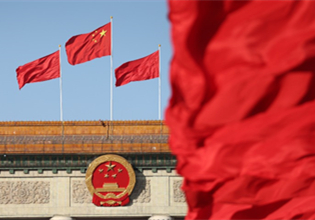Inner Mongolia leads in energy supply
North China's Inner Mongolia autonomous region has strengthened its role as a key energy hub by ensuring stable coal and power supplies while advancing new energy development.
Coal production reached 640 million metric tons, up 0.7 percent year-on-year, with about 60 percent transported to major consumption regions in Northeast, North, and East China. Several major mining projects were approved or put into operation, and multiple coal mines resumed production to boost supply capacity.
The region also accelerated construction of new capacity and improved cross-regional green electricity trading, adding 11.91 GW of new power capacity and bringing the total to 270 GW. Power generation rose 4.7 percent to 416.7 billion kWh, with 165.6 billion kWh transmitted to other provinces – over one-sixth of China's total. Green electricity accounted for 29.6 percent of this output.
Oil and gas output grew steadily, with crude oil production reaching 1.66 million tons, up 2.9 percent, while natural gas output stood at 16.88 billion cubic meters. Coalbed methane production surged 30.4 percent to 2.64 million cubic meters, helping secure energy supplies for local and Beijing-Tianjin-Hebei residents.
New energy development was particularly notable, with 10.28 GW of new renewable capacity added, leading the nation and lifting the total renewable capacity to over 145 GW. Renewable generation reached 144.6 billion kWh, accounting for 35 percent of the region’s power output, and green electricity exports jumped 55 percent to 49 billion kWh.
Energy storage and hydrogen also expanded rapidly, with storage capacity growing to 11.02 GW, more than doubling year-on-year, and utilization rising by over 450 percent. Green hydrogen output reached 3,659 tons, already surpassing last year's total, supported by steady progress on hydrogen pipeline projects.



 Print
Print Mail
Mail





